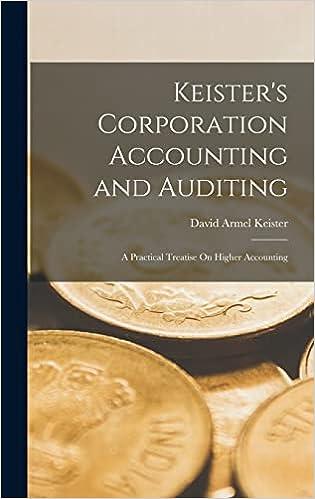Assume the following information for a hotel chain that wishes to adopt the new method. The firm has $100 million in operating profit, has $1
Assume the following information for a hotel chain that wishes to adopt the new method. The firm has $100 million in operating profit, has $1 billion in investment, and uses a cost of capital rate of 5%, so the capital charge is $50 million and the economic profit is $50 million. Relevant calculations are contained in Part 1 of the following schedule:
| Part 1: Economic Profit (in thousands, except cost of capital rate) | |
|---|---|
| Revenue | $ 500,000 |
| Operating costs: | |
| Personnel costs | 300,000 |
| Other costs | 100,000 |
| Operating profit | $ 100,000 |
| Operating profit before personnel costs (OPBP) | $ 400,000 |
| Investment (capital) | $ 1,000,000 |
| Cost of capital, rate | 0.05 |
| Capital charge | $ 50,000 |
| Economic profit = Operating profit Capital charge | $ 50,000 |
| Part 2: Economic Profit Calculated Using Employee Productivity | |
| Number of employees | 10,000 |
| Employee productivity: | |
| Operating profit before personnel cost per employee ($400,000/10,000) | $ 40 |
| Capital charge per employee ($50,000/10,000) | 5 |
| Employee productivity | $ 35 |
| Less personnel cost per employee ($300,000/10,000) | 30 |
| Economic profit per employee = Productivity Cost | $ 5 |
| Total economic profit, all employees | $ 50,000 |
| Note: All numbers in thousands except for number of employees |
The next step is to decompose economic profit using employee productivity. To do this, we first determine operating profit before personnel costs (OPBP):
OPBP = Operating profit + Personnel costs
$400,000 = $100,000 + $300,000
Employee productivity can be determined by calculating OPBP less capital charge, per employee. For this example, because there are 10,000 employees, OPBP is $40,000 per employee and the capital charge is $5,000 per employee so that productivity is $35,000 per employee. The next step is to determine personnel cost per employee, $30,000, and subtract that from employee productivity to obtain economic profit per employee, $5,000 (i.e., $35,000 $30,000). Total economic profit for all employees is thus $5,000 10,000, or $50 million, the same amount as determined in the conventional way. The value of the decomposition of economic profit into employee productivity and personnel costs per employee is that it provides measures that the hotel chain can benchmark to other hotel chains. It also provides a direct measure of the profit that is being generated per employee relative to the average personnel cost for each employee. Measures of revenue per employee and personnel cost per employee are widely used in the hospital, health and human services, and other people-oriented service industries.
Required:
Use the above approach and assume a chain of residential care facilities employs 10,000 people, has a cost of capital of 6%, and has the following information (000s):
| Revenue | $ 620,000 |
|---|---|
| Operating costs | |
| Personnel costs | 330,000 |
| Other costs | 170,000 |
| Operating profit | $ 120,000 |
| Investment | $ 1,500,000 |
Determine the productivity per employee, personnel costs per employee, and economic profit per employee.
Step by Step Solution
There are 3 Steps involved in it
Step: 1

See step-by-step solutions with expert insights and AI powered tools for academic success
Step: 2

Step: 3

Ace Your Homework with AI
Get the answers you need in no time with our AI-driven, step-by-step assistance
Get Started


